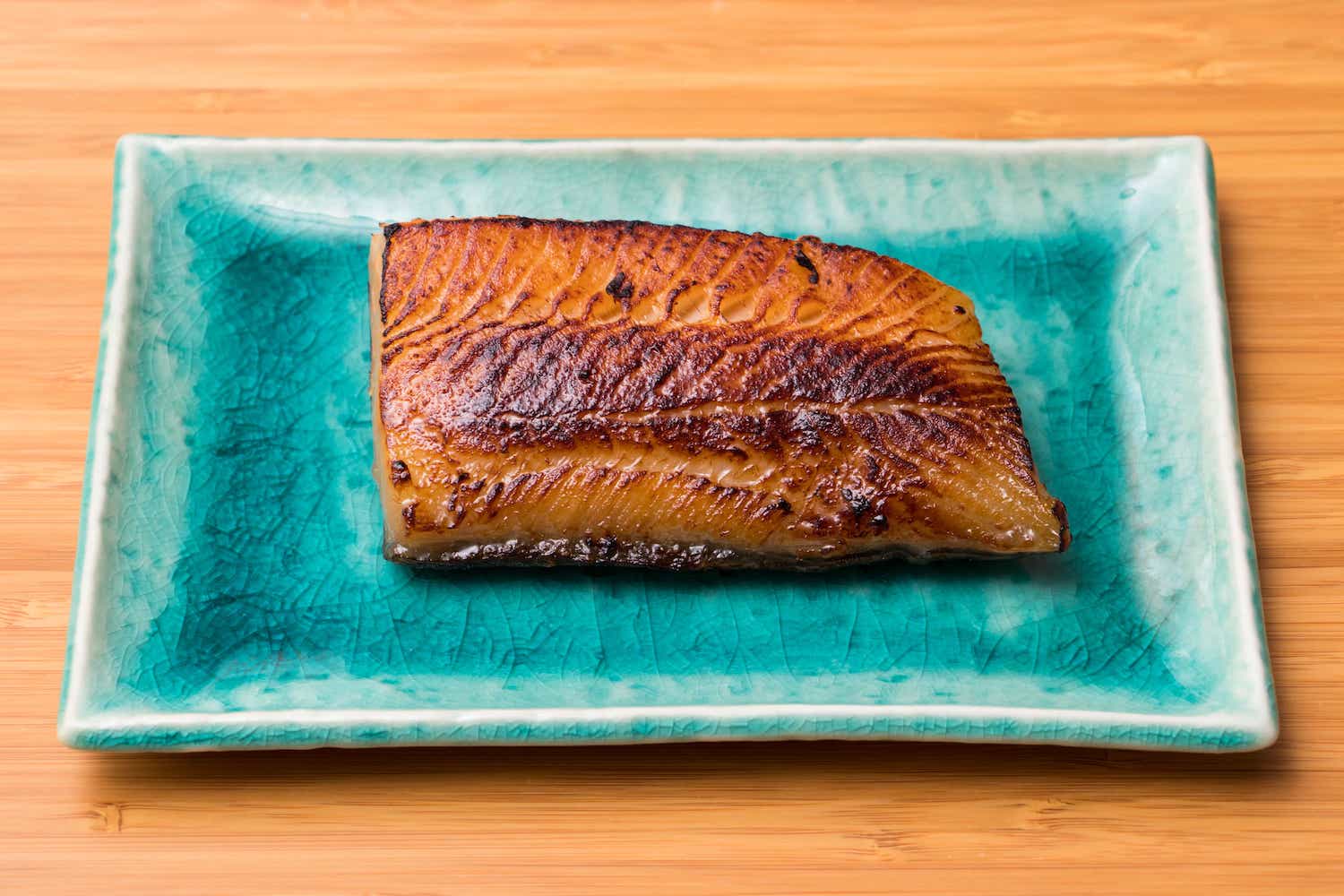How to Make Miso Butterfish at Home

Delicious miso butterfish
Miso butterfish is simple to make and incredibly delicious. It really hits many of our buttons: rich texture, fermented umami flavor, caramelization, sweetness, and salt. Most people credit the chef Nobu Matsuhisa for popularizing this recipe which contains only five ingredients. My version is messily penciled on a small piece of paper and I don’t recall where I found this ratio or exactly when I wrote it down (it was a long time ago). You can find the Nobu version with a quick online search too, and I would encourage experimentation with the balance of the four marinade ingredients in order to find the ratio that tastes best to you. I often change the amounts or even leave out ingredients or steps, and it still tastes very good.
Butterfish is also known as sablefish and black cod, and in Japan, gindara. It has very high oil content, which makes it a great pairing with sweet-salty miso and the umami of sake. Because of the fattiness, butterfish is quite forgiving compared to other fish so the danger of overcooking is not as imminent. This recipe can work well with other oily fish like sockeye salmon and albacore tuna. It can be made with fillets or steaks, as long as the fish is fresh and of high quality. You can easily scale this recipe up or down depending on how much fish you have.
Miso Butterfish
1/4 cup sake
1/4 cup mirin
1/4 cup white miso
3 tablespoons white sugar
1 or 2 butterfish fillets or steaks
In a small pan, heat the sake and mirin, and boil for 20-30 seconds to burn off the alcohol.
Remove from the heat and whisk in the sugar, followed by the miso.
Chill the marinade, and add it to the fish in a container or ziplock bag.
Marinate in the fridge for 2 - 4 days.
Wipe off (don’t rinse) the marinade and cook. Grilling or broiling is best, but you can also brown it in a pan (nonstick or cast iron to avoid sticking to the pan). Sometimes I will cook it sous vide at 115F for 40 minutes, then brown it with a torch.
Keep in mind that the marinade is full of sugars and proteins so the fish can brown and burn quickly. The best way to be consistent is to monitor the internal temperature with an instant-read kitchen thermometer. My preference is 115 - 130F internal temperature, but some people might prefer to go higher for firmer texture or food safety concerns. Most sources cite 145F as the absolutely safe internal temperature for fish. To go lower, it’s recommended to freeze the fish for one week to kill any potential parasites. It’s always good to do your own research across multiple sources so that you can make informed decisions on topics like these.

Miso butterfish ingredients: miso, butterfish, sugar, mirin, sake

Boil sake and mirin to vaporize the alcohol

Turn off heat and add miso and sugar

Cool the marinade and place in a ziplock bag with the butterfish, then place in fridge for 2 - 4 days

Grill, broil, pan fry, or sous vide














































































